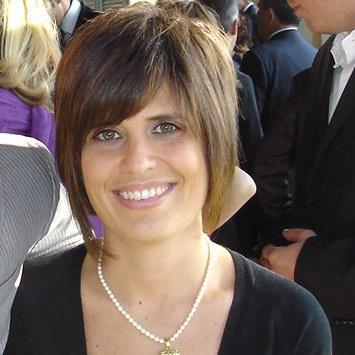The City of Renaissance
Share
Florence, the capital of Tuscany region, was founded by Romans in 59 BC by Julius Caesar in the wet valley of the Arno River, during the spring of the “Floralia” (or Ludi Florales: celebrations to honor Flora, the Roman Goddess of Spring and the harvest). The Romans chose this period, because it gave birth to the astrological and astronomical year, and therefore particularly propitious period. The constellations, the spring and the flower continually recur in Florentine events.
The structure of the city was defined to the traditional precepts of the “Castrum” or military camp; a rectangle protected by brick walls and circular towers with four main city gates, located in Piazza della Repubblica. Currently only a few remains are visible.
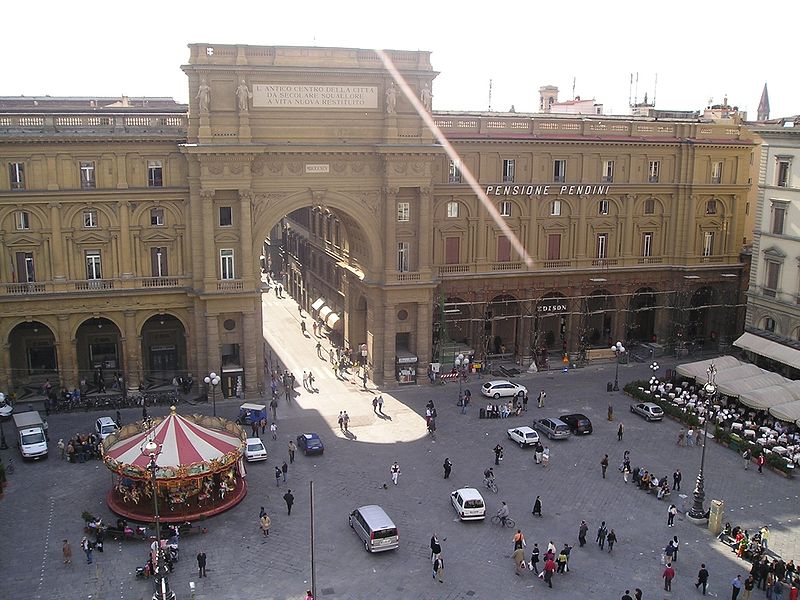
Piazza della Repubblica, ancient square of the Campidoglio center of Florentia
The economic prosperity of Florentia also increased rapidly thanks to the new route of the Via Cassia, which connected the city to Rome. Florence became a free municipality in 1138 and was enriched thanks to the trade of its artifacts, beginning to impose itself on the nearby cities of Pisa, Pistoia, Siena and Arezzo.
Later the “ Priorato delle Arti” was formed. They were professional guilds, organized by the “Popolo Grasso” ( the mercantile and manufacturing middle class), powerful enough to oppose the old urban aristocracy. The Major Guilds were involved in the constructons and maintenance of monuments.
Moreover, the numerous conflicts between the most prominent families divided into factions: Guelphs and Ghibellines, and the continuing disagreements between the aristocrats and the people, caused an instability that led the Medici family, rich merchants and bankers, to impose themselves on the government of the city.
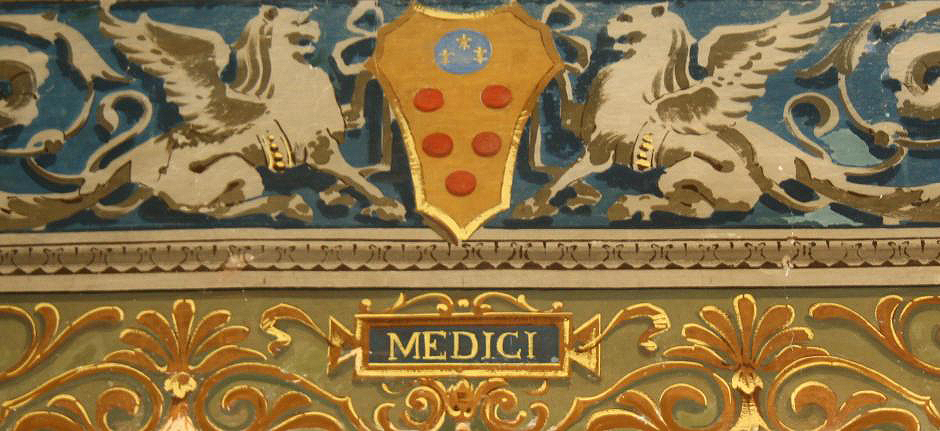
Coat of arms of the Medici family
It started with Cosimo the Elder, the Family introduced a regime of Lordship, extending the power over the whole of Tuscany. Lorenzo il Magnifico called at court illustrious men and transformed his city into a centre for humanistic culture and international politics.
The Medici family, with the exception of the period characterized by the sermons of the friar Girolamo Savonarola (late ‘400), governed the Grand Duchy of Tuscany until the extinction of the family in 1737. Thanks to the Medici family, Florence shows the world its many artistic richness, introducing the term Renaissance.
After the Medici family domination, The Grand Duchy passed to the Lorraine family, who became Hapsburg-Lorraine with the marriage of Francesco Stefano and Maria Teresa of Austria. Except for a short period of French domination, Tuscany remained under the dominion of the Habsburg-Lorraine until 1860, when ,with a plebiscite, it was annexed to the reign of Vittorio Emanuele II of the Savoy family.
In 1865 Florence was the capital of Italy and the historical city center underwent intensive urban renovation, for example the construction of the Viali dei Colli and Piazzale Michelangelo. The city remained capital until 1871 when it was substituted by Rome.
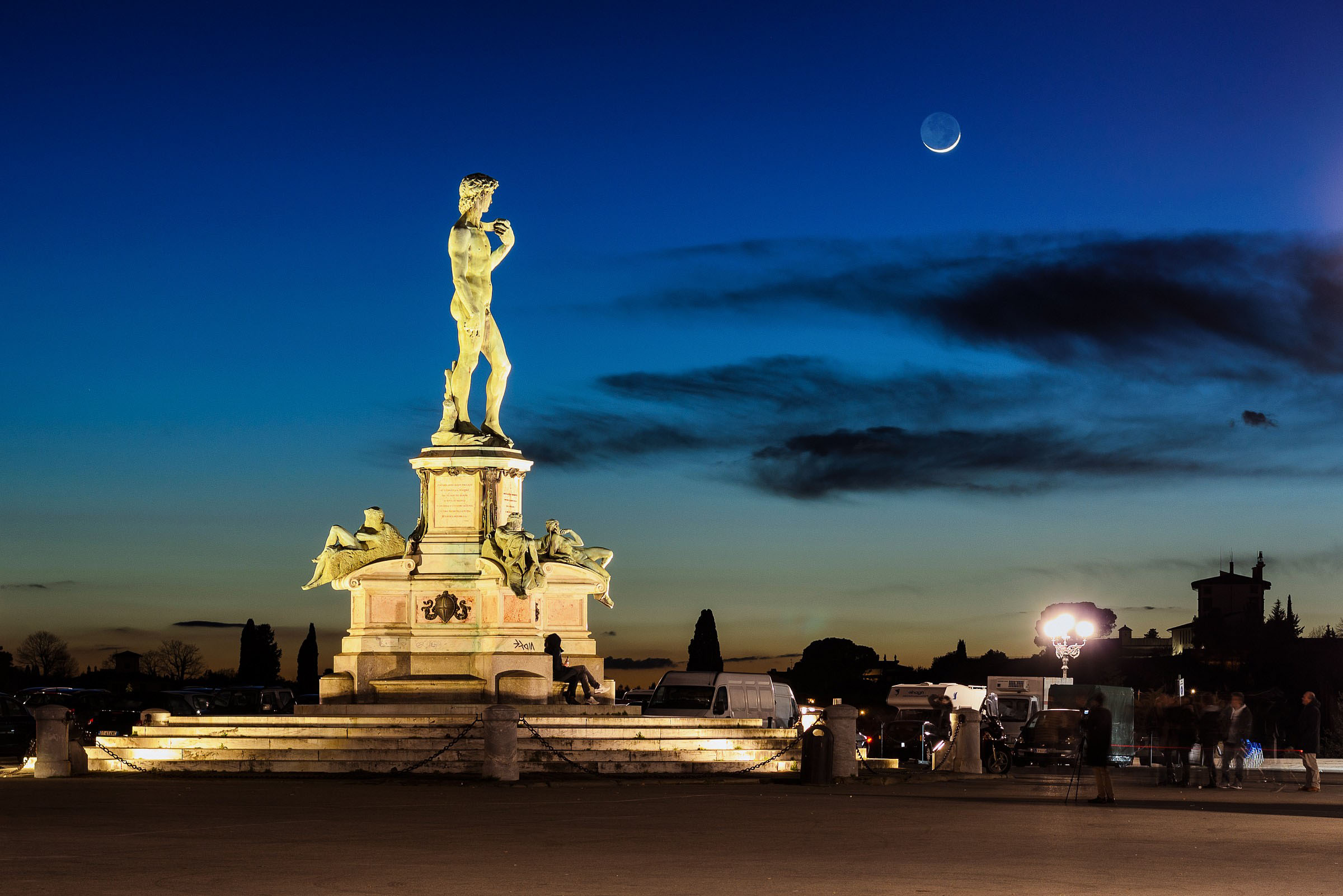
Piazzale Michelangelo with the reproduction of Michelangelo’s David
One of the recommended itineraries for whoever visits the city for the first time, starts from Piazza Duomo and Piazza S. Giovanni , that represent the religious heart of the city. We can admire the oldest building in the square: the Baptistery dedicated to St. John the Baptist, a typical example of Florentine Romanesque style with its bronze doors, one of them represents the witness of the beginning of the Renaissance. Moreover in Piazza Duomo we can admire the Cathedral with its façade in neo-gothic style, completed between 1871 and 1877 by Emilio de Fabris , the Giotto’s bell tower and also the immense Dome build by Brunelleschi which dates from 1420 to 1436.In this area, archeological excavations have brought to light artefacts of the Roman era.
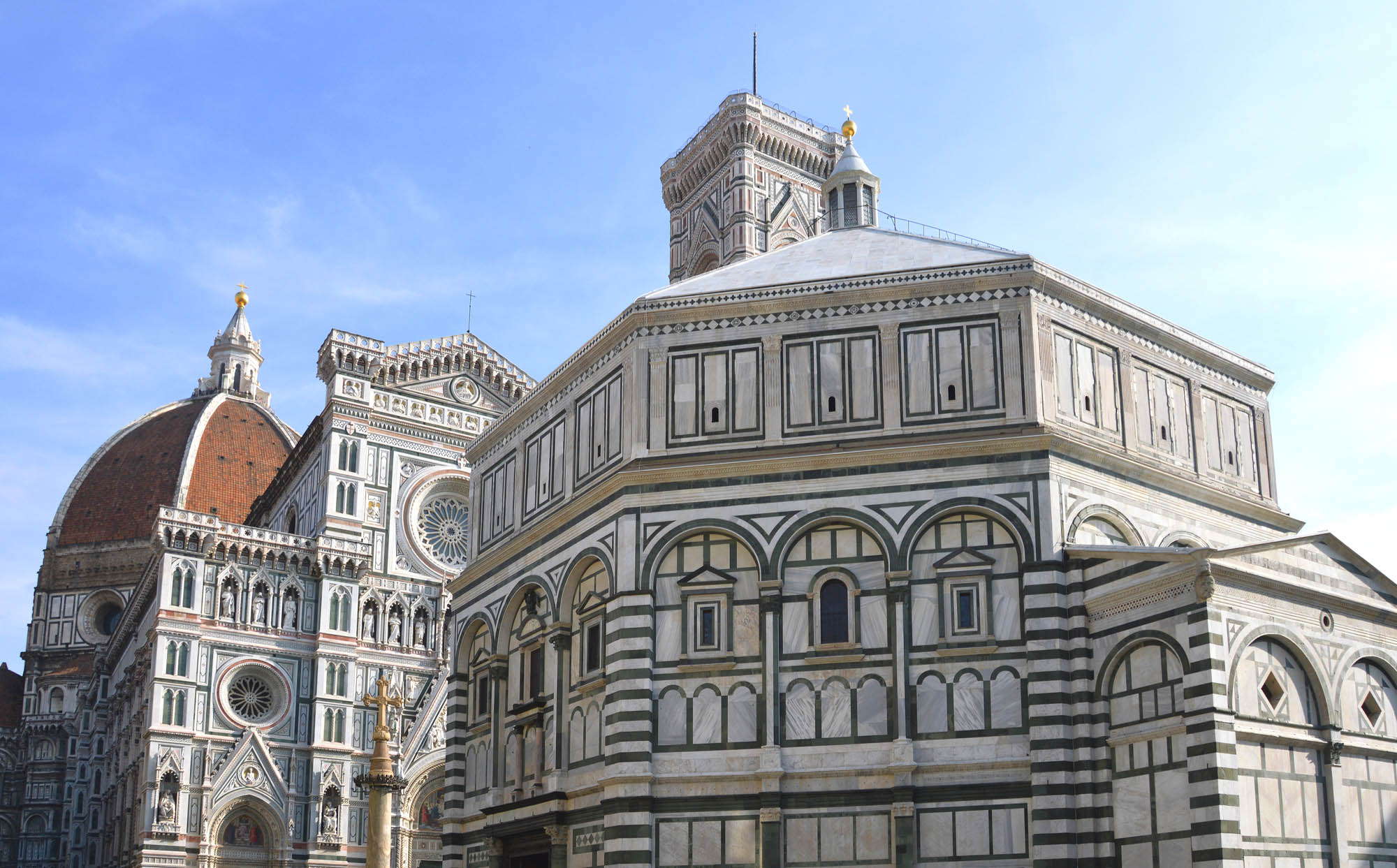
Baptistery – Santa Maria del Fiore Cathedral
If we cross Via Roma, we will find Piazza della Repubblica, the grandiose square, where the Roman forum once stood and the castrum or military camp was located.
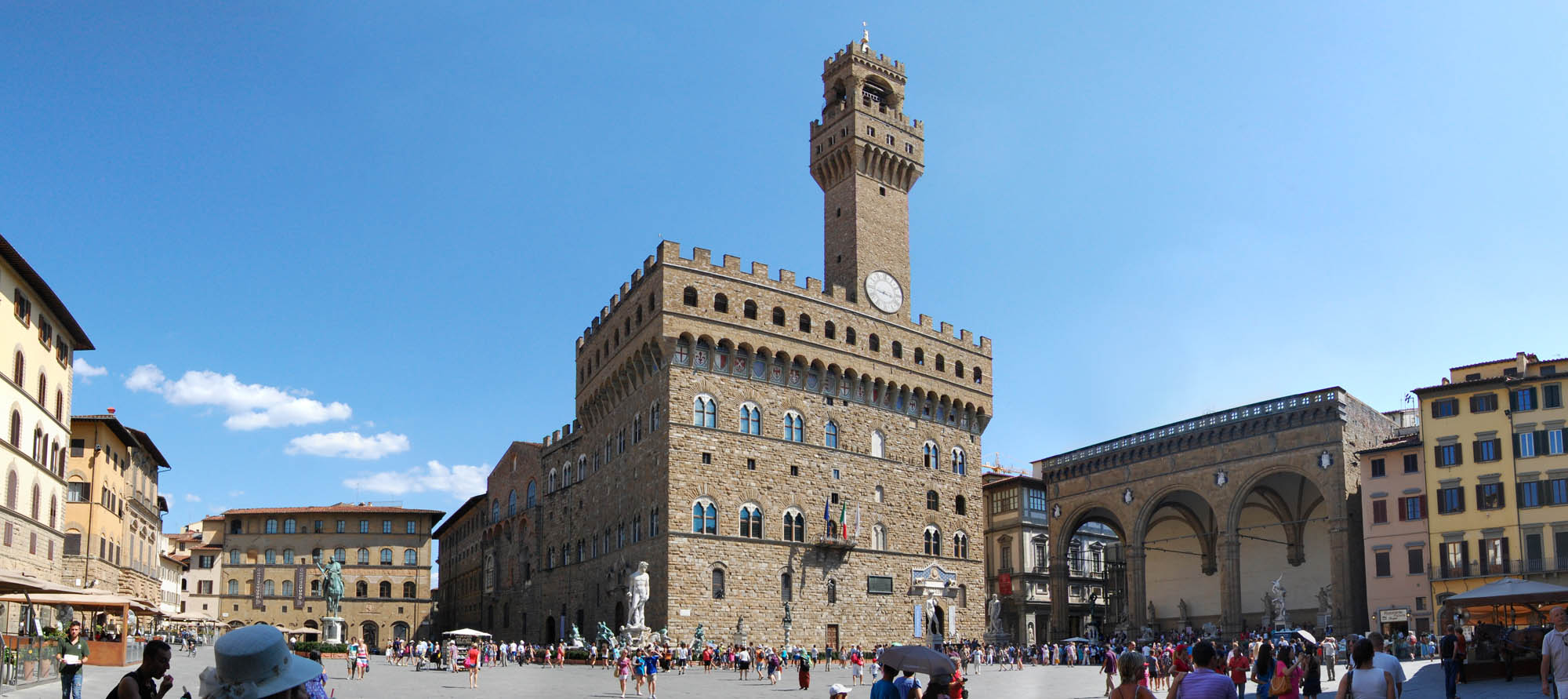
Piazza della Signoria and Palazzo Vecchio
Afterwards we will go to Piazza della Signoria ,where there is a copy of the famous statue of David, sculpted by Michelangelo, then we will visit Palazzo Vecchio, the heart of the government of the Florentine Republic and the Uffizi, where you can admire the collection of the Medici family, consisting of works of art made by various artists, such as Leonardo, Michelangelo, Raffaello, Caravaggio.
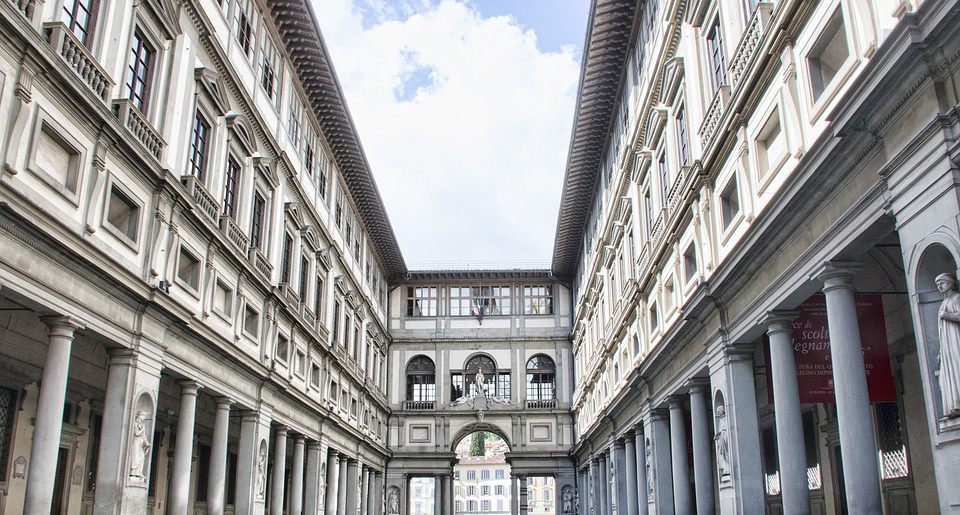
Galleria degli Uffizi
We will cross Ponte Vecchio “ The Old Bridge” built in the XIVth century, which crosses the Arno river and has goldsmiths’ shops along it.
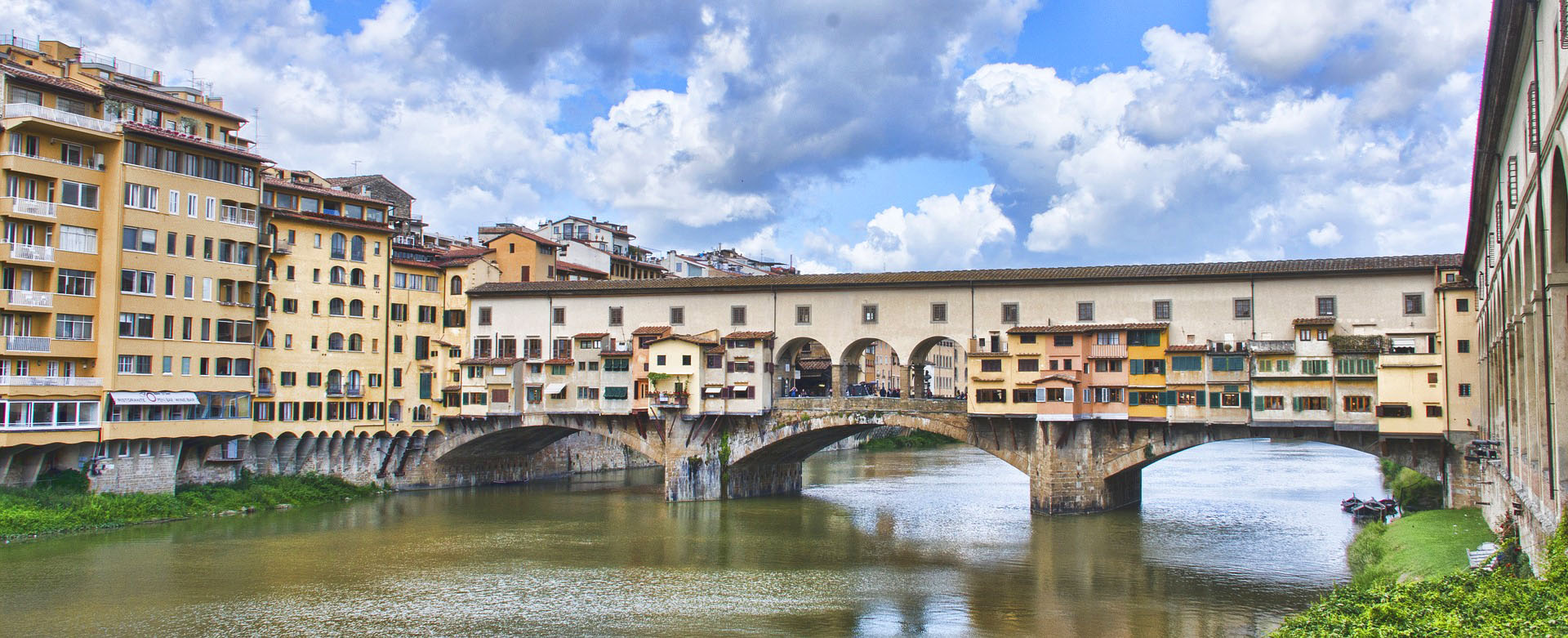
Ponte Vecchio
At the end, we will admire Palazzo Pitti. This building was started thanks to Luca Pitti, then bought by the Medici family.
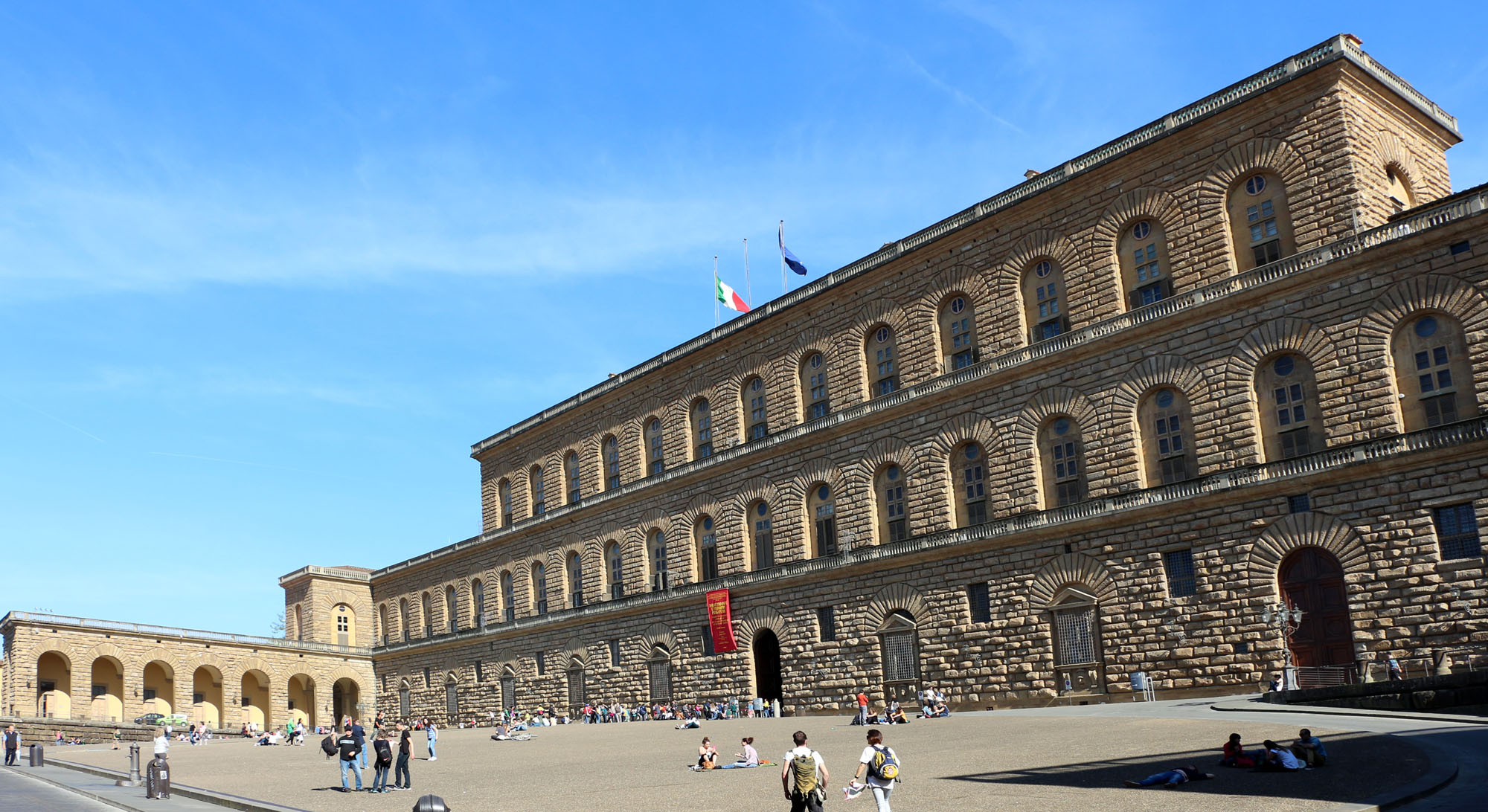
Palazzo Pitti
At the end , I suggest you walk up to Piazzale Michelangelo, where you can see a reproduction of the most beautiful works of Michelangelo and you can admire the most breathtaking view of Florence, you have ever seen.
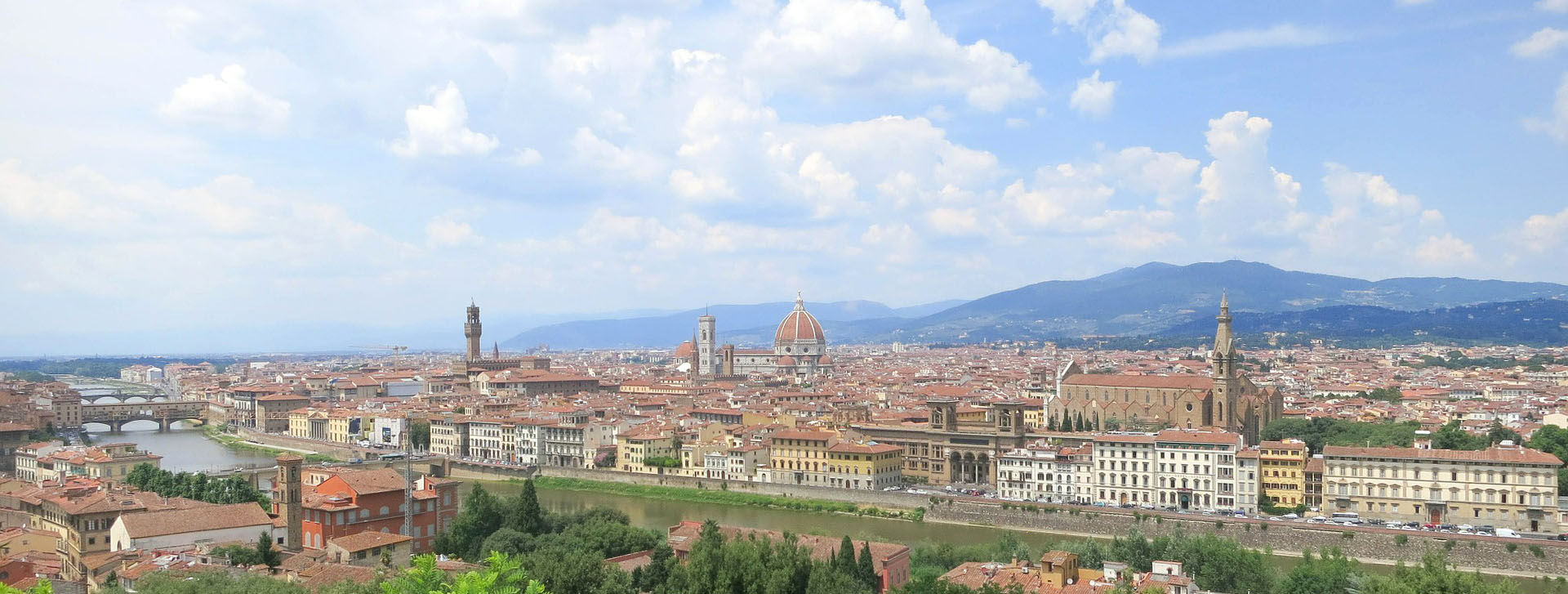
View of Florence from Piazzale Michelangelo
Silvia Vecoli
Licensed Tour Guide in Siena, Florence and around Tuscany in English, Spanish, Portuguese and Italian.
Web: www.tuscanytours.holiday
E-mail: silviatuscanytour@gmail.com
Mobile (+39) 338 5814370
Facebook – Instagram





